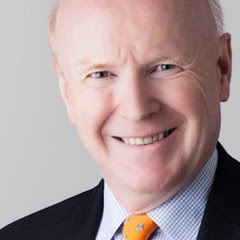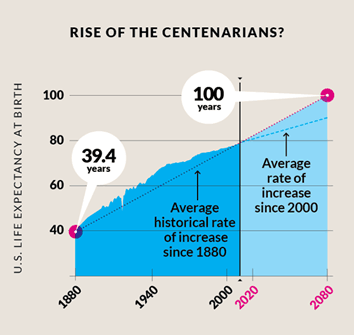
By Dan Richards,
Special to the Financial Independence Hub
Advisors spend a great deal of their time with clients who ask, “Will I run out of money?” As a result, few issues get more attention than the sustainable withdrawal rate in today’s environment.
But new research shows that an equally pressing question is, “How can I enjoy life in my 60s, before health issues creep in?”
Remarkable growth in lifespans
A couple of years back, I wrote an article titled “Will I be able to pay for a hip replacement when I’m 85?,” highlighting the boomer focus on withstanding the ravages of age. In another article, I described boomers as not your parents’ retirees. Compared to their parents:
- 86% of boomers plan a more active lifestyle.
- 84% say their retirement lifestyle will look different.
- 72% expect a higher standard of living.
- 70% plan to keep working.
- 32% expect to achieve additional professional success.
Underpinning this paradigm shift is a remarkable expansion in lifespans that began in the 1880s and has slowed only slightly. Here’s a summary of historical life expectancies for Western Europe and North America:
|
Year |
Life expectancy |
| 1100 |
26 |
| 1800 |
36 |
| 1900 |
46 |
| 1950 |
66 |
| 2014 |
78 |
A recent article in The Atlantic asked the question, “What happens when we all live to 100?” It depicted the inexorable increase of three months per year in life spans since the 1800s in the chart below and then explored the implications of an aging society, using what’s happening in Japan (today’s “grayest” country) as an example.

Source: Atlantic Magazine
The article devoted considerable attention to current research on how our minds and bodies can say healthy as we age and suggested that, increasingly, boomers will be more concerned about their “healthspans” than their lifespans.
Planning for clients’ “Glory Decade”
This issue of healthy longevity was addressed in an article by actuary Fred Vettese, titled “Why our 60s are our glory decade.” He made the case that many of today’s boomers have a narrow window in which to travel and enjoy other pursuits before being prevented by health issues. Tapping into European data (and it’s hard to argue that the average American is healthier than the typical European), he pointed out that today, the average 50-year old European male can expect to live to 79 and a female can expect to live to 84. But on average they will only make it to age 67 or 68 without disabilities that will moderately or severely limit them.
Based on this data, Vettese suggested many boomers have a “glory decade” in their 60s in which they have the time, means and health to pursue their dreams. That’s not to suggest that some boomers won’t take on ambitious travel well into their 70s and 80s, but those will be the exceptions rather than the norm.
Many clients are out of touch with reality on this issue. Indeed, a Merrill Lynch study released early in September 2014 titled “Health and Retirement: Planning for the Great Unknown” pointed out that 80% of boomers expect their generation to be healthy and active at age 75. However, 55% of retirees retired earlier than expected. In 40% of those cases, the reason for earlier-than-planned retirement was health issues.
Go-go, slow-go, no-go
This has fundamental implications for retirement planning. Author Michael Stein popularized the three phases of retirement, referring to them as go-go, slow-go and no-go. Last spring, (US-based financial) planner Michael Kitces discussed some new research on spending in retirement related to these three phases, examining the concept of “the retirement spending smile.”
So how can boomer clients fund the “glory decade?” As I was finalizing this article, I came across an article by the New York Times’ Ron Lieber, The Children will be Fine – Spend the Inheritance.His first suggestion was that parents divert future bequests to invest in memories today. Part of the rationale of this was research showing that among parents ages 59 to 96, 86% expected to leave a bequest. But just 45% of the children, ages 40 to 60, thought they would get one. Lieber offered a second, more contentious suggestion: using reverse mortgages to unlock home equity.
Note that this analysis applies to boomers. Fred Vettese points out that at the same time as life spans are growing, the period for which people are disabled is shrinking,meaning that “health-spans” of disability-free life expectancy is growing faster than life spans. As a result, Vettese suggests that clietns under 50 can add roughly five years to their disability-free life expectancy,taking it well into the 70s. Clients under 35 can add another five years or so of a disability-free “healthspan.”
Engaging clients in conversation about a “glory decade” and the implications of an average “healthspan” that is shorter than most boomers expect can be tricky – but it is precisely in these types of difficult conversations that good financial advisors add the most value.
Client Insights president Dan Richards conducts programs to help financial advisors gain and retain clients and is an award winning faculty member in the MBA program at the University of Toronto. To see more of his written commentaries, go to www.danrichards.com or here for his videos. This article originally appeared in Advisorperspectives.com and is republished on the Hub with the permission of Dan Richards. You can find the original article here.


